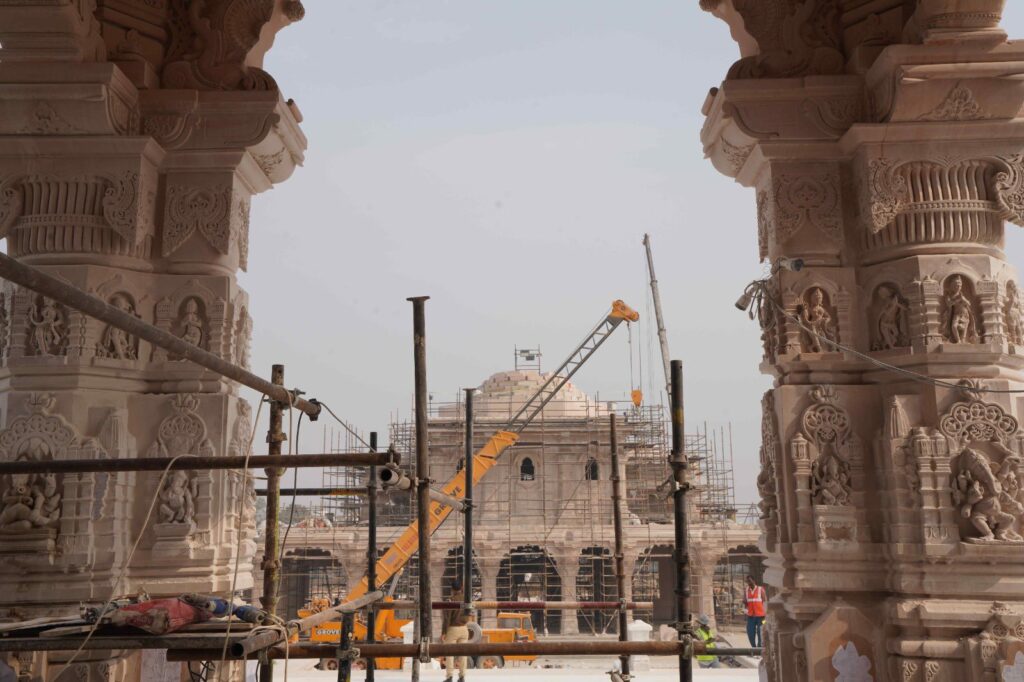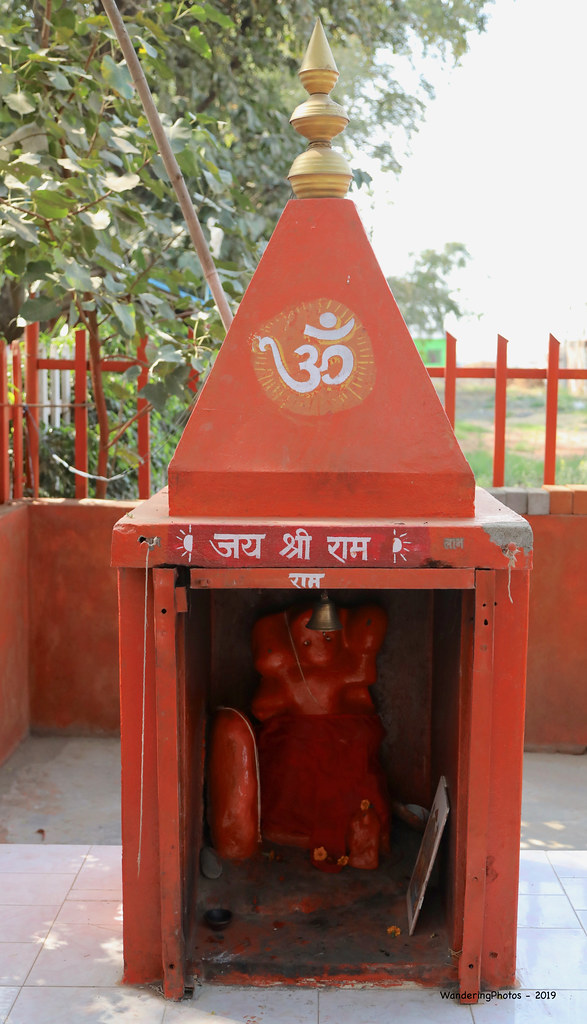
Before I start writing this post, I want to make it aptly clear. I am not associated with any political party, or do not represent or endorse views of any. I am not even a primary member of any political party, and I have friends across all party lines.
Now that I have made it very clear, let me start with the topic of the day. The consecration ceremony at Ayodhya, and the reason behind some political parties not attending the ceremony. Of course, I never give much thought to what the political parties are saying. Especially, when it comes from one particular party. The party is always on look out for excuses to hide their own weaknesses, defeats and shortcomings. Be it the media, investigation bodies, EVM machines or even Shankaracharyas. They will stick on to anything as far as they don’t have to talk about own negative points. But the reason for writing this article is just to clarify some thoughts from minds of common people.
Is the Temple complete?
The first reason that the politicians are citing is that that the temple construction is not complete. While we know that some work is still in progress, especially towards creating more amenities for visitors and towards building smaller shrines around the main shrine of Rama. Here, we need to understand one very basic concept about any temple structure. The structure of any temples; may it be 15 centuries old or built in modern times; comprises of multiple sections. If we observe closely, very few of these sections are deity centric and most of them are devotee centric. The Garbhagriha or sanctum sanctorum of the temple is the part that is considered to be most auspicious and most important part of any shrine.
As per the tweet shared by Mr Champat Rai, the Garbha Griha of the temple is ready, along with the platform that will host the idol of Ram Lalla. The Garbha Griha appears to have been made, keeping in mind the principles laid down by Agama.
प्रभु श्री रामलला का गर्भ गृह स्थान लगभग तैयार है। हाल ही में लाइटिंग-फिटिंग का कार्य भी पूर्ण कर लिया गया है। आपके साथ कुछ छायाचित्र साझा कर रहा हूँ। pic.twitter.com/yX56Z2uCyx
— Champat Rai (@ChampatRaiVHP) December 9, 2023
Now, let’s consider the definition of Mandapas as per the Agamas. The word Mandapa means any roofed, but enclosed or open, pavilion resting on pillars and standing independently (within temple enclosure or on river banks or road sides), or attached to the sanctrum of a temple. 1 If we go by this definition, Mandapa maybe a separate structure. It is not essentially a part of the temple and does not hold any religious significance, when it comes to the divinity and significance of the temple. The Agamas talk of various Mandapas such as Mukha Mandapa, Ardha Mandapa, Maha Mandapa, Nityarchana Maandapa, Utsava Mandapa, Kalyana Mandapa, Asthana Mandapa, Ranga Mandapa, Nritya Mandapa, Alankara Mandapa, Vahana Mandapa, Vasantha Mandapa and Pradakshina Mandapa. The purpose of each of these Mandapas is different; but limited to facilitate temple functions to be performed by humans. These purposes include the gathering of devotees, performing special festivity rituals, performing dance and stage shows, storage of the jewelery of the deity, performing weddings and functions etc. All these functions are devotee centric and not deity centric. So saying that the temple is incomplete, because some work is going on at the Mandapas front, would not be accurate.
Can a temple exist without Mandapas?

Any temple, even the minor ones, has two important functions to be performed. Religious and administrative. The religious part of the temple is where the temple worship is a prominent duty. The administrative part comprises of everything else apart from the worship and rituals of the deity. The multiple functions performed by a temple may include educational, socio-organizations, financial, agricultural, performance arts, warfare training, community kitchen etc. 2 Depending on what functions are being performed by the temple, it may have one or more types of Mandaps.
Let’s consider examples of lakhs of small roadside shrines that are abundantly found in all villages of India. These temples don’t have any additional task being performed, except the religious one. People walking by the road stop for a moment, bend their head in respect or join their hands and walk away. Someone in the village, usually a person living nearby the shrine, has taken up responsibility to worship the deity and light a lamp everyday at the temple. These temple usually comprise one small room (the Garbhagriha), with a small platform elevated marginally from the land. The small platform holds the idol of the deity, or in some cases, just a rock with Sindoor applied on it. The temples exist in all corners of the country, without any Antarala or Mandapa. However, we still fold our hands in respect in front of these temples.
Anyone and everyone who has come across such small shrines will have to agree that the temple can definitely exist without the Mandapas. In many parts of the country, one would even come across idols and stones with Sindoor placed along the road, under a tree. They don’t even have a roof or walls. But that does not mean people don’t worship them. It is all in the hearts and minds of the devotee. And when there is Bhakti in the heart, all other conditions just don’t apply.
Even if we, for a moment, forget about these small shrines and look at some important shrines from our ancient heritage, we would have more clarity.
Should Consecration be done only after whole structure is complete?

In Khajuraho group of temples, is one temple of Matangeshwara. The Shivlinga of the temple is 9ft in height, and is much bigger than the doors. So it is very obvious that the deity consecration happened well before the outer walls of the Garbhagriha were made. Otherwise, it is entirely impossible for the the idol to pass through the temple doors. Similarly, Bhaskareshwara temple in Bhubaneshwara has a Shivlinga that is of the height of two stories. It is very obvious that the temple was built around the Shivlinga, after the consecration.

Consider example of Kailasha temple in Ellora, or many other cave temples. The excavation of these cave temples is done top down. The construction starts with the Kalasha and comes down from there. Shikhara is made before the Garbhagriha here .The deity in the Garbhagriha is made before the Jagati and Adhishthana of the temple. While Jagati and Adhisthana is invariably part of the Garbha Griha, they come much later then consecration of the deity. The partically excavated rock-cut temple of Vettuval Kovil in Tamilnadu is notable for its architecture and construction method. It is the only known example of a Pandya era monolithic temple that was carved out in three dimensions, in-situ from the top of the hillock.3 In this temple, you can very prominently understand the method used in the construction of the cave temple.

The Bhojeshwar Temple is an incomplete temple in Bhojpur village of Madhya Pradesh. The temple’s construction is believed to have started in the 11th century, during the reign of the Paramara king Bhoja. The construction was abandoned for unknown reasons, with the architectural plans engraved on the surrounding rocks.4 The unfinished materials abandoned at the site, the architectural drawings carved on the rocks, and the mason’s marks have helped scholars understand the temple construction techniques of 11th-century India. The unfinished temple, houses a Shivlinga 2.5 m in height, and is worshipped for centuries. Lakhs of devotees arrive at the temple for worship on every Mahashivaratri.5 Did the temple being incomplete stop devotees from visiting temple and praying there?
Same is the case with the Billeshwara temple at Hangal, Karnataka. The temple has a functioning Garbhgriha, but no Mandapa. The temple construction probably remained incomplete in the 12th century (Kalyani Chalukya era). 6 But that did not stop the devotees from worshipping the deity there.
Why are Shankaracharyas not attending the event?
Second claim being raised from the the political party is that the four Shankaracharyas are not attending the event. I was very surprised by this claim. Adi Shankaracharya has had a great deal of efforts to in spreading Sanatana Dharma all across the country. And he established four Peethas, with four Shankaracharyas at the four peethas. I would like to ask you readers, how many times have you heard of any news from these Shankaracharyas? Cause, frankly I haven’t heard much. I may have limited knowledge on the topic of Shankaracharyas. So, I will not comment on their knowledge and dedication to Hindutva or Sanatan Dharma. But I am really amused how the political parties suddenly invoking Shankaracharyas? Never before heard congress leaders visiting any Shankaracharya or taking any lessons from them. So the political leaders invoking Shankaracharya is nothing mut pure opportunism.
Is Religion a personal matter?
Agama has clear distinction between worship carried out by the householder in his/her own home (Atmartha) and worship carried out by priests in the temples for the sake of others (Parmartha). So religion is both public and private. What religious practise and worship a person is carrying out at own home is a personal matter. But when the same person is visiting a temple, which is by default a public place of worship, his religion is no longer a private thing. This however, does not mean that one can be compelled to visit or not visit a ceremony. That still remains a personal choice.
Should these Political parties attend the ceremony?
Of course, religion is a personal matter, as we spoke earlier and as rightly pointed out by Mr Sitaram Yechury. 7 Religion and attending religious events have always been personal choices. I won’t go into what-aboutery. I won’t say “You attended that event, so you must attend this one”. I only have objections about the kind of foolish logic being given by these political parties. The logic that is spreading hate about our own religion, amongst our own people. The kind of logic that raises more questions, than answers. The kind of logic, that makes you look like bigger fools than the people were already thinking of you to be.
Attending or not attending is always going to be a personal choice. But spreading misinformation to justify your decision, can not be a personal choice. It would be only a political suicide.
- Prof S. K. Ramchandra Rao (1989),The Agama Encyclopedia ↩︎
- George Michell (1988), The Hindu Temple: An Introduction to Its Meaning and Forms ↩︎
- G. Ezhil Adirai (2016), TECHNOLOGICAL METHODS IN MAKING SCULPTURES, Proceedings of the Indian History Congress, Vol. 77 ↩︎
- Kirit Mankodi (1987). “Scholar-Emperor and a Funerary Temple: Eleventh Century Bhojpur” ↩︎
- “Mahashivratri being celebrated across Madhya Pradesh”. Zee News. 7 March 2016. ↩︎
- https://timesofindia.indiatimes.com/travel/destinations/billeshwara-temple/articleshow/53318200.cms ↩︎
- Sitaram Yechury declines invitation to attend Ram Temple inauguration, The Hindu, December 26 2023 ↩︎

This is the best explanation sir. Actually you removed a shed of confusion about this. Now I will cherish the pran pratishta more happily. 🙏🏻🙏🏻
Thank you for your appreciative words Mr Sumit.
Thank you for sharing your honest take on this, all the doubts one might have regarding this topic are all covered and answered so well backing it with some genuine examples from our history 🙌🏻
Thank you for your appreciative words Juie.